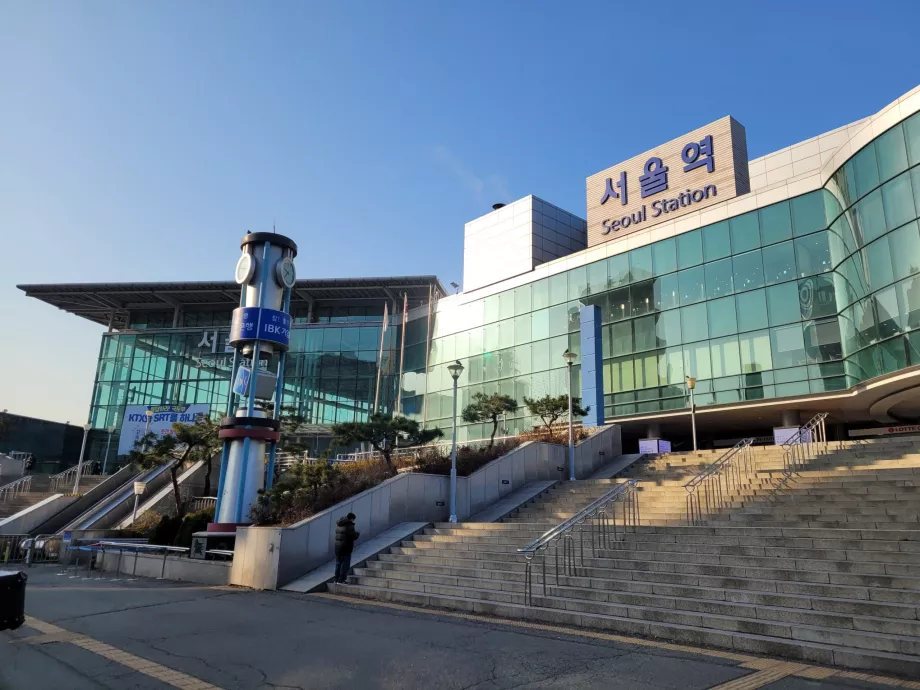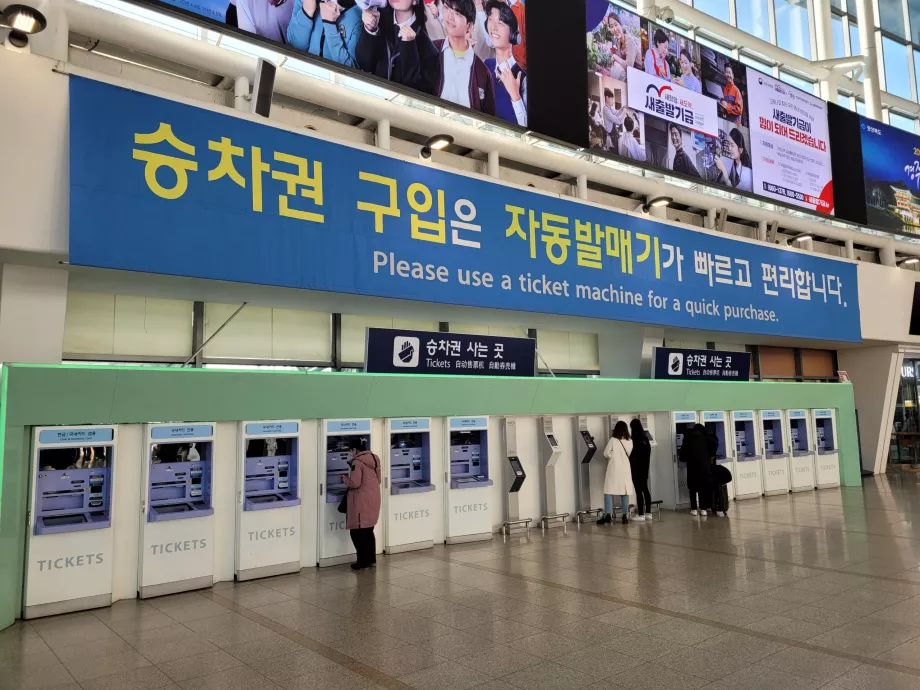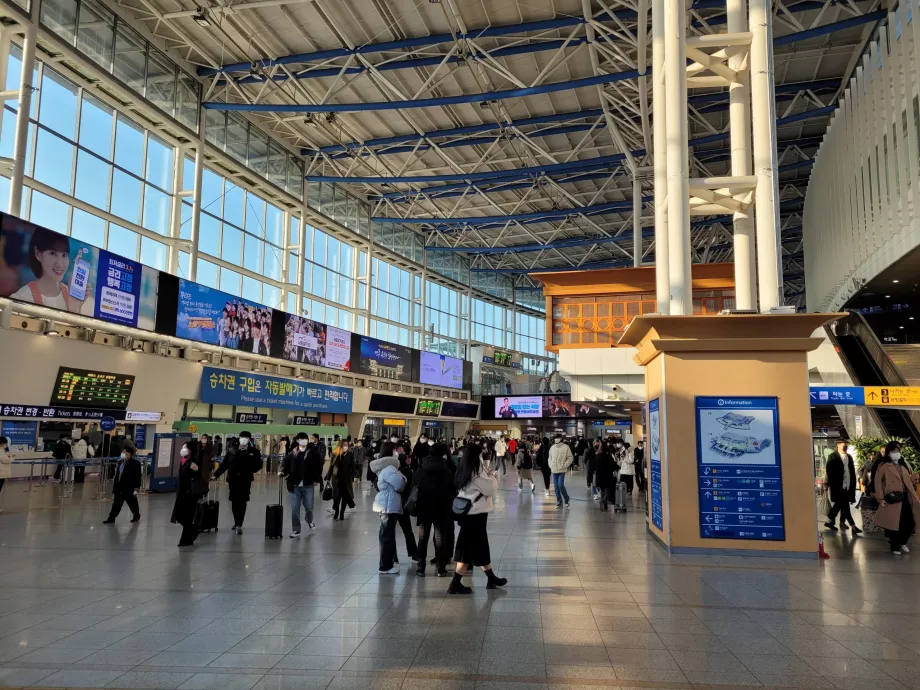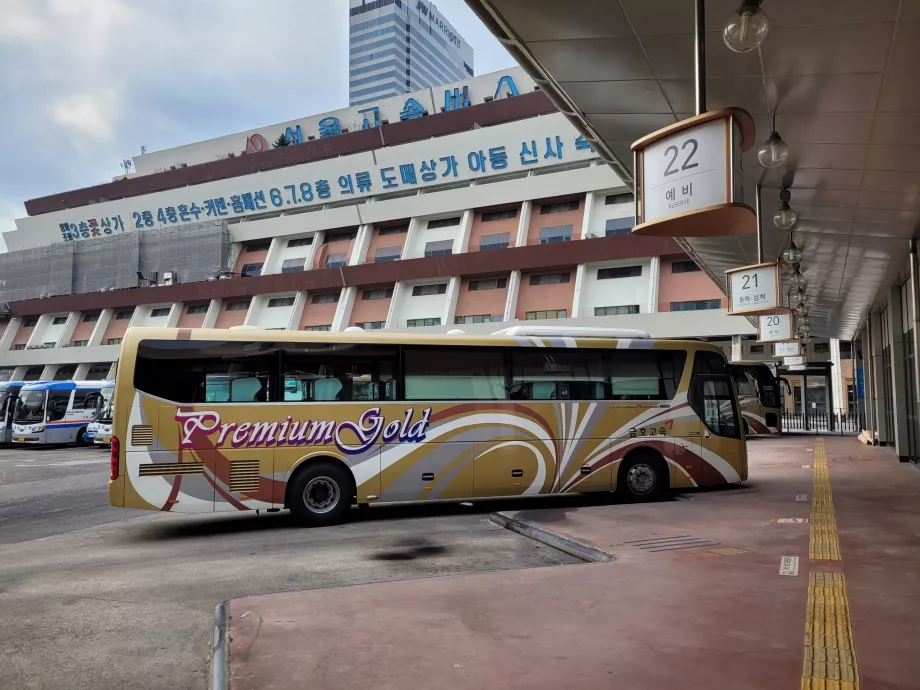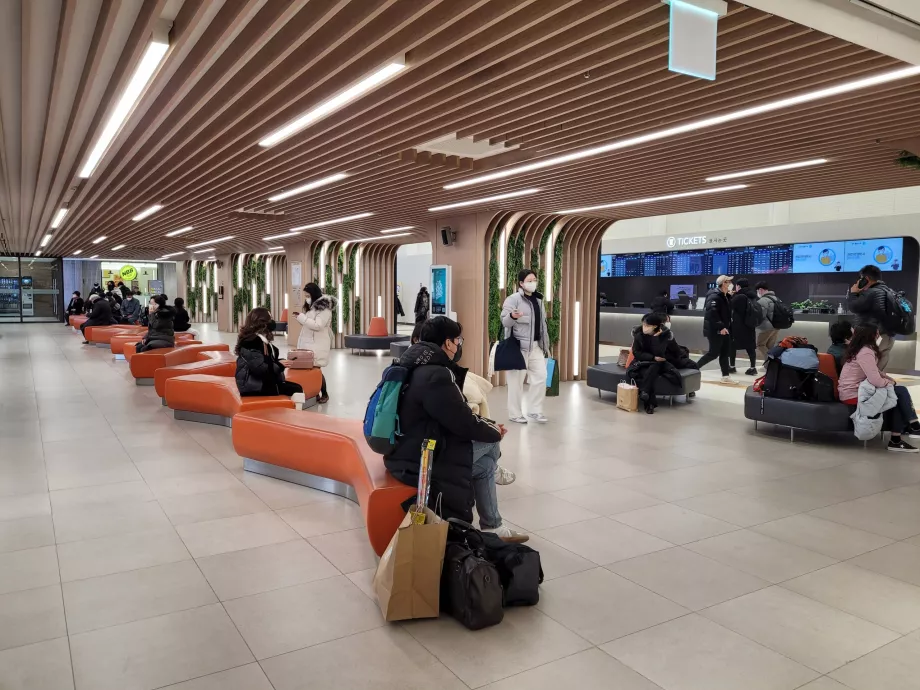Getting to Seoul
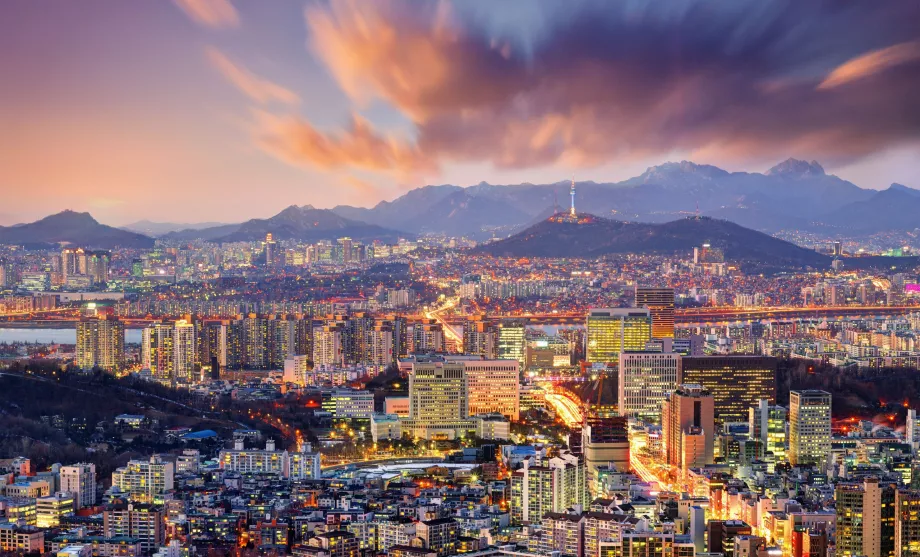
Seoul is a landlocked city accessible by excellent air and domestic express trains or buses. There is no international land connection to Seoul, as South Korea is only connected to the rest of the mainland via North Korea. However, the border between the two countries has remained porous since the 1950s...
By air to Seoul
Seoul is connected by direct flights to the whole world. Most of the major airlines fly here, and Seoul is also home to two local airlines, among the largest in Asia: Korean Air and Asiana Airlines.
Cheap low-cost connections are mainly to East Asia (Japan, Taiwan, Thailand, Malaysia), mainly through Jeju Air and T'Way Air.
From Europe, the cheapest way to get there is usually with Turkish Airlines or LOT.
There are two major airports in Seoul, details of which are listed below (click on the airport name):
- Incheon ICN - one of the largest airports in Asia and the main international gateway to Korea
- Gimpo GMP - a smaller airport closer to the centre of Seoul, mainly domestic flights and for example the Seoul Gimpo - Jeju Island connection is the busiest air route in the world with departures up to 12 times per hour. Domestic flights are supplemented by a smaller number of international services, mainly to the surrounding area.
Domestic flights
The only place in Korea worth travelling by air is probably Jeju Island, where all Korean airlines fly - the vast majority of flights depart from Gimpo Airport closer to the centre. Return airfares are around 128 eur.
Airlines from Seoul also go to Busan, UIsan, Muan and other cities mostly in the south. If you calculate the total travel time including getting to/from the airport, waiting and the flight itself, in most cases it works out faster to travel by train.
However, if you are travelling with hand luggage only, travelling by air can be 2-3 times cheaper than by train. One-way tickets from Seoul to Busan or Ulsan start at 22 eur, especially with Air Busan.
By train to Seoul
Korea has a very good rail network of high-speed trains and classic slower trains, and Seoul acts as a natural hub with lines to all the major cities.
Travelling by train from Seoul around Korea is definitely the most efficient mode of transport. The tracks for high-speed trains are new and straight - you'll pass through a number of tunnels and bridges. It takes 2.5 hours to get to Busan (about 400 km) at the other end of the country.
There are two main train carriers to Seoul:
- Korail - almost all services pass through Seoul Central Station(map), some local trains leave from Yongsan Station(map) and certain trains terminate at Haengsin Station(map)
- SRT - a private carrier operating high-speed trains, all services terminate at Suseo Station(map) in southern Seoul, and even in web searches you need to enter "Suseo" as the destination or departure point, not "Seoul"
Train tickets can be purchased via the carriers' websites: letskorail.com or ets.srail.kr.
However, you can buy tickets for the same price from ticket machines at train stations, where seat availability is not a problem. It is worth buying tickets in advance if you need to travel 100% on a particular train or on routes where there are not so many trains.
For detailed information on travelling by train, see our guide to South Korea.
By bus to Seoul
Long-distance buses run very frequently from Seoul to all parts of Korea. Of course, they're especially worthwhile where you can't get off the train, but even on routes where the train runs, bus tickets can be a third cheaper.
Meanwhile, Korean buses are very comfortable and all long-distance routes have a 2-aisle-1 seating arrangement.
From Seoul (as well as all over Korea) you can use two types of buses:
- Expressbus (integrated reservation system on kobus.co.kr) - runs on order of the Ministry of Transportation on longer routes between major cities
- InterCity Bus (integrated reservation system on intercitybuse.tmoney.co.kr) - runs on order of cities on shorter routes than Expressbus and often to smaller cities
There are several bus stations in Seoul:
- Express Bus Terminal - Central City Terminal(map) - the central station for the vast majority of Express buses heading to/from Seoul.
- Express Bus Terminal (orange line 3, dark green line 7, beige line 9)
- Seoul Nambu Jonghap Terminal(map) - station for InterCity buses heading south (i.e. practically the whole country except for the eastern province of Gwangwon-do)
- Subway stations: Nambu Bus Terminal (orange line 3)
- Sangbong Terminal(map) - station for InterCity and Express buses heading north from Seoul and to Gwangwon-do province, but some Express buses also go south from here
- Mangu subway station (Gyeongui-Jungang Line)
- Dong Seoul Terminal(map) - station for InterCity heading mainly to smaller cities throughout Korea, but mainly north and east of Seoul
- Gangbyeon subway station (light green line 3)
Generally speaking, if you are a tourist traveling to major cities or touristy places, you will usually find it less convenient to use the services from Express Bus Terminal or Nambu Terminal.
For detailed information on travelling by bus, please refer to our guide to South Korea.
Any questions left?
If you have any questions or comments about the article...

